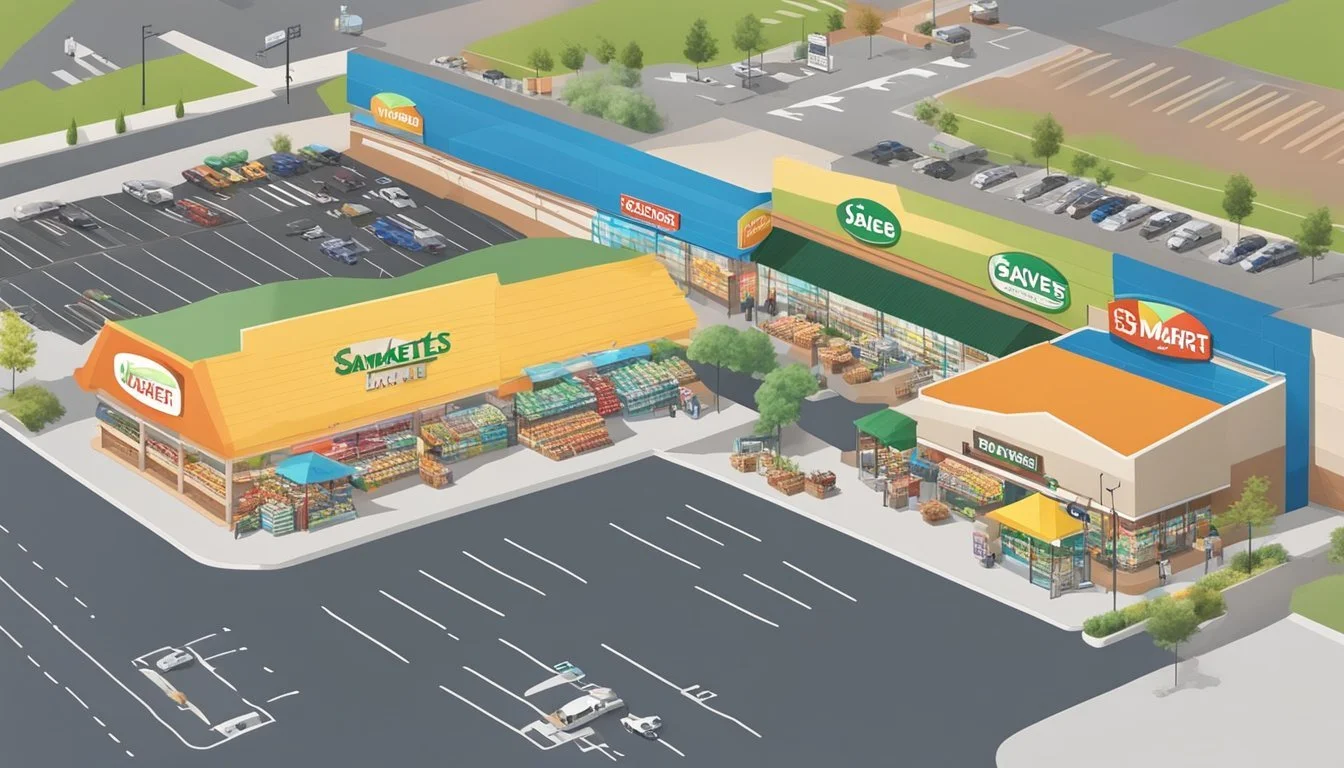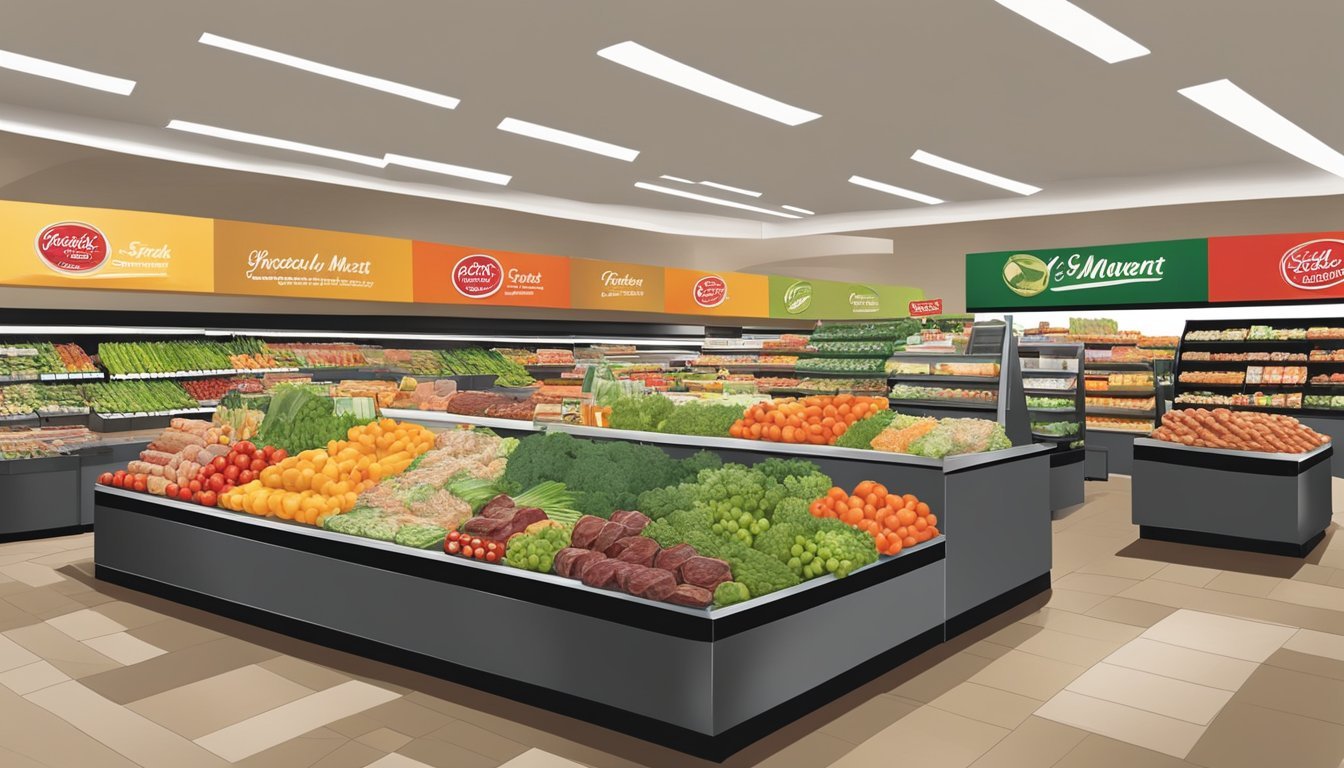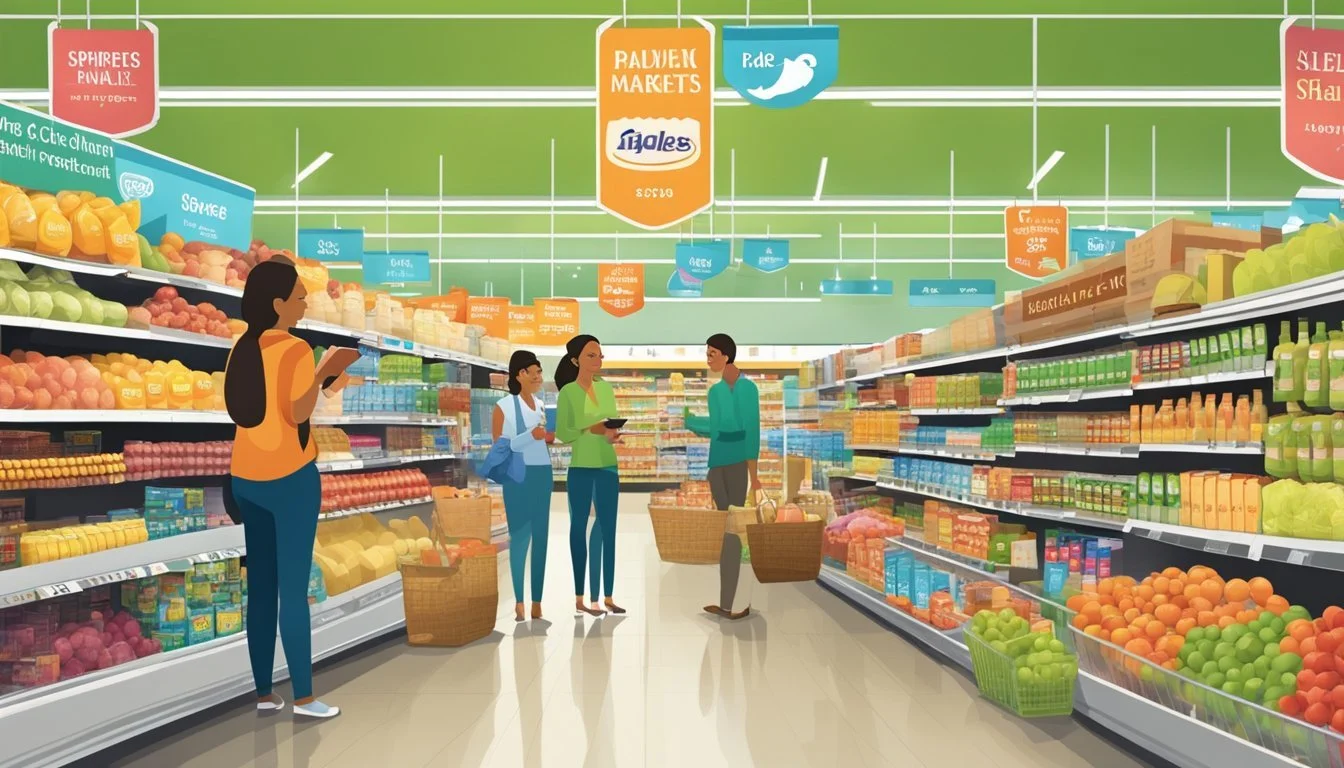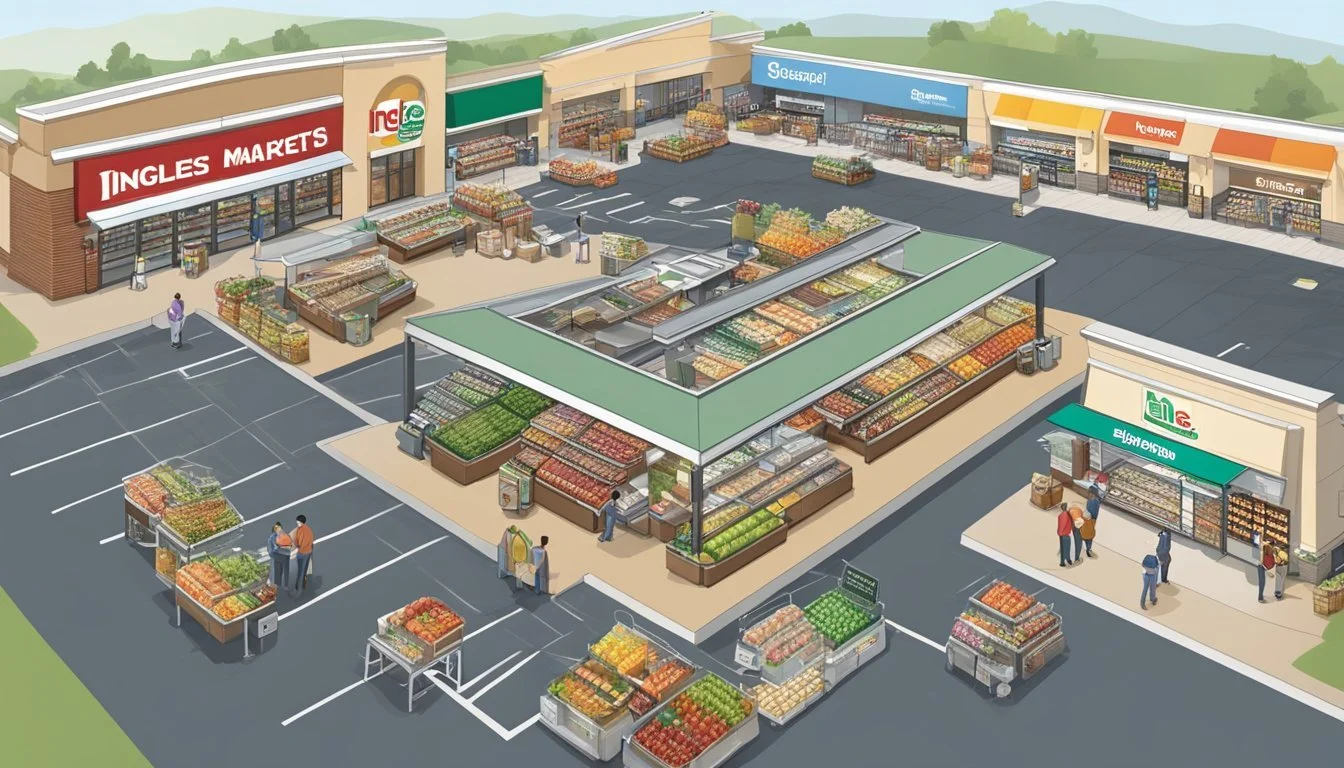Ingles Markets vs Save Mart
A Comprehensive Comparison of Prices, Selection, and Service
Grocery shopping can be a significant expense for many households. Choosing the right store can lead to substantial savings over time. Ingles Markets and Save Mart are two popular grocery chains that offer competitive prices and a wide range of products.
Ingles Markets primarily serves the Southeastern United States, while Save Mart operates in California and Nevada. Both stores aim to provide quality groceries at affordable prices. Based on overall customer satisfaction and pricing, Ingles Markets generally edges out Save Mart as the better grocery store option.
Each chain has its strengths and weaknesses. Ingles Markets is known for its fresh produce and in-store bakeries, while Save Mart offers a good selection of local and organic products. Pricing can vary depending on location and specific items, so shoppers may benefit from comparing prices on their most frequently purchased goods at both stores when possible.
Overview of Ingles Markets and Save Mart
Ingles Markets and Save Mart are two prominent supermarket chains operating in different regions of the United States. Both companies have established strong presences in their respective markets through decades of growth and expansion.
History and Expansion
Ingles Markets was founded in 1963 by Robert Ingle in Asheville, North Carolina. The company rapidly expanded throughout the southeastern United States, focusing on rural and suburban areas. Ingles prioritized a strategy of owning its real estate and distribution centers to maintain control over costs and operations.
Save Mart Supermarkets began in 1952 when Nick Tocco and Mike Piccinini opened their first store in Modesto, California. The company grew steadily in the Central Valley region of California. Save Mart expanded its reach through acquisitions, notably purchasing Lucky Stores in 2007, which significantly increased its presence in Northern California and Nevada.
Store Brands and Private Labels
Ingles Markets offers a range of private label products under the Laura Lynn brand, named after the founder's daughter. These products span various categories, including groceries, dairy, and household items. The company emphasizes quality and value in its store brand offerings.
Save Mart operates multiple store brands across its different banners. The Save Mart label covers a wide array of products, while the Pacific Coast Selections brand focuses on premium offerings. FoodMaxx, another Save Mart Companies banner, features its own line of budget-friendly private label items.
Current Market Presence
Ingles Markets operates over 200 supermarkets across six southeastern states: North Carolina, South Carolina, Georgia, Tennessee, Alabama, and Virginia. The company maintains a strong regional focus, with many stores in rural and suburban locations. Ingles also operates its own distribution centers and milk processing facilities.
Save Mart, now part of The Save Mart Companies owned by the Jim Pattison Group, has a significant presence in Northern and Central California, as well as Northern Nevada. The company operates stores under multiple banners, including Save Mart, Lucky, and FoodMaxx. With over 200 locations, Save Mart serves diverse communities across urban, suburban, and rural areas in its market region.
Comparing Shopping Experience
Ingles Markets and Save Mart offer distinct shopping experiences that impact customer satisfaction. Both chains prioritize different aspects of the grocery shopping process, from store layouts to customer service approaches.
Store Layout and Ambiance
Ingles Markets typically features spacious aisles and a logical product arrangement. Their stores often have a bright, clean atmosphere with clear signage. Many locations include an in-store café or dining area, creating a welcoming environment for shoppers.
Save Mart stores tend to have a more compact layout, maximizing space efficiency. They often incorporate colorful displays and eye-catching promotional areas. The produce section is usually prominently placed, emphasizing their focus on fresh foods.
Both chains strive to create an inviting ambiance, but Ingles Markets generally provides a more relaxed shopping experience due to its less crowded layout.
Customer Service Quality
Ingles Markets prides itself on friendly, attentive service. Staff members are often readily available to assist customers with product locations or inquiries. The company invests in employee training to ensure consistent service quality across stores.
Save Mart also emphasizes customer service but takes a slightly different approach. Their staff are trained to be efficient and knowledgeable, focusing on quick problem-solving and speedy checkout processes.
Both chains generally receive positive customer feedback regarding service, with Ingles Markets often praised for its personalized attention and Save Mart for its prompt assistance.
Convenience Features
Ingles Markets offers several convenience features:
Self-checkout options in many stores
Fuel centers at select locations
Online ordering with curbside pickup
Save Mart provides similar conveniences:
Mobile app for digital coupons and rewards
Self-checkout lanes
Online ordering and delivery services in some areas
Both chains have embraced technology to enhance the shopping experience. Save Mart's mobile app integration gives it a slight edge in digital convenience, while Ingles Markets' fuel centers add value for customers looking to combine grocery shopping with refueling their vehicles.
Product Assortment and Quality
Ingles Markets and Save Mart offer diverse product selections with varying quality across departments. Both chains prioritize fresh offerings and cater to different customer preferences through their product ranges.
Freshness of Produce and Meats
Ingles Markets emphasizes locally sourced produce, often partnering with regional farmers to stock fresh fruits and vegetables. Their meat department features a selection of USDA Choice cuts and custom butcher services. Save Mart also focuses on fresh produce, rotating seasonal offerings throughout the year. Their meat counters provide a range of options, including value packs and premium cuts.
Both stores implement quality control measures to ensure produce freshness. Ingles typically restocks produce sections multiple times daily. Save Mart uses advanced cooling systems to maintain optimal temperatures for fruits and vegetables.
Availability of Organic and Specialty Products
Ingles Markets has expanded its organic offerings in recent years. They stock a dedicated organic produce section and carry various organic packaged goods. Save Mart's organic selection is more limited but growing, with an emphasis on popular organic staples.
For specialty items, Ingles tends to have a wider array, including international foods and gourmet ingredients. Save Mart focuses more on mainstream products but does offer some specialty items, particularly in stores located in diverse communities.
Private Label versus Name Brands
Ingles Markets' private label, "Laura Lynn," covers a wide range of products from basic groceries to specialty items. These products often compete with name brands on quality while offering lower prices. Save Mart's store brand, "Save Mart," primarily focuses on everyday essentials and pantry staples.
Both chains stock major national brands across all departments. Ingles typically offers a larger variety of name-brand options, especially in center-store aisles. Save Mart balances its selection between private label and popular name brands, with a focus on providing value options.
Pricing and Value for Money
Ingles Markets and Save Mart employ different pricing strategies and savings programs to attract budget-conscious shoppers. Both chains aim to offer competitive prices while balancing quality and selection.
Everyday Pricing and Discounts
Ingles Markets focuses on providing consistently low prices across its product range. The chain frequently offers weekly specials and loss leaders to draw customers. Save Mart, on the other hand, tends to have slightly higher everyday prices but compensates with deeper discounts on select items. Both stores run regular sales, with Ingles typically featuring more items at reduced prices. Save Mart often has larger markdowns on fewer products, particularly in its produce and meat departments.
Loyalty Programs and Savings
Ingles Advantage Card offers personalized discounts and fuel savings based on purchase history. Cardholders accumulate points for additional savings on future purchases. Save Mart's Digital Coupons program allows customers to load deals directly to their account for automatic savings at checkout. The chain also offers a rewards program tied to its gas stations, providing fuel discounts based on grocery spending.
Comparative Cost Analysis
A basket of common grocery items tends to be slightly cheaper at Ingles Markets compared to Save Mart. However, the difference narrows when factoring in loyalty program benefits and sale prices. Ingles often wins on pantry staples and national brands, while Save Mart can edge out on fresh produce pricing. Both chains price-match competitors' advertised deals, helping savvy shoppers maximize savings. Seasonal promotions and holiday sales can shift the value equation, with each chain offering compelling deals during peak shopping periods.
Consumer Insights and Ratings
Customer feedback and market research provide valuable insights into the performance of Ingles Markets and Save Mart. These assessments highlight key strengths and areas for improvement for both grocery chains.
Customer Reviews and Testimonials
Ingles Markets receives praise for its friendly staff and clean stores. Customers appreciate the wide selection of local and organic products. Some shoppers note competitive prices on staple items.
Save Mart earns positive comments for its fresh produce and meat departments. Customers like the store layout and short checkout lines. The loyalty program is frequently mentioned as a money-saving benefit.
Both chains face some criticism. Ingles Markets customers occasionally report out-of-stock items. Save Mart receives mixed reviews on pricing, with some finding it higher than competitors.
Market Surveys and Research Findings
Industry surveys rank Ingles Markets and Save Mart in the middle tier of regional grocery chains. Ingles Markets scores well in customer service categories. Save Mart rates highly for store cleanliness and organization.
A 2023 grocery satisfaction study found:
Ingles Markets: 78% customer satisfaction rate
Save Mart: 76% customer satisfaction rate
Both chains lag behind top-rated national competitors in certain areas:
Area Ingles Markets Save Mart Price competitiveness 3.2/5 3.1/5 Product variety 3.8/5 3.7/5 Checkout speed 3.5/5 3.6/5
Consumer Reports ratings place both chains in similar positions, with room for improvement in overall quality and value.
Market Competitiveness and Alternatives
Ingles Markets and Save Mart face stiff competition in the grocery industry. Both chains must navigate a complex landscape of national giants, regional players, and niche competitors to maintain their market positions.
Comparison with Major Competitors
Ingles Markets and Save Mart compete with larger national chains like Walmart, Kroger, and Target. Walmart's extensive reach and low prices pose a significant challenge. Kroger's size and diverse store formats give it an edge in many markets.
Ingles has shown strong performance, with comparable-store sales rising 17.5% in recent quarters. This growth outpaces many competitors. Save Mart, while a regional player, faces pressure from expansion by chains like Aldi and Trader Joe's.
Both Ingles and Save Mart must differentiate themselves from these major players. They often focus on local products, customer service, and community involvement to stand out.
Niche Markets and Smaller Chains
Specialty grocers like Whole Foods and Trader Joe's target specific consumer segments. These chains appeal to health-conscious and gourmet shoppers, carving out profitable niches.
Ingles and Save Mart must balance their offerings to compete with these niche players. They often incorporate organic and specialty sections within their stores to attract similar customers.
Regional chains like Publix in the Southeast present another layer of competition. These chains often have strong local loyalty and tailored product offerings.
To compete, Ingles and Save Mart leverage their understanding of local preferences. They may partner with area suppliers or offer region-specific products to maintain their market share against both niche and regional competitors.
Future Outlook and Industry Trends
Grocery retailers face significant changes driven by technology and consumer demands. Both Ingles Markets and Save Mart must adapt to remain competitive in an evolving landscape.
Technological Advancements in Shopping
Grocery chains are investing heavily in digital platforms and automation. Mobile apps allow customers to create shopping lists, access personalized deals, and skip checkout lines. Self-service kiosks and cashierless stores are becoming more common, streamlining the shopping experience.
Amazon's influence continues to grow, pushing traditional supermarkets to innovate. Retailers are expanding curbside pickup and home delivery options to compete. Some chains are testing automated micro-fulfillment centers to efficiently process online orders.
Voice-activated shopping through smart speakers and AI-powered inventory management systems are emerging technologies grocery CEOs are exploring. These advancements aim to enhance convenience and operational efficiency.
Sustainability and Ethical Sourcing
Consumers increasingly prioritize environmentally-friendly and ethically-sourced products. Grocery chains are responding by expanding organic, local, and fair-trade offerings. Many retailers have committed to reducing plastic packaging and food waste in their operations.
Transparent supply chains are becoming essential. Some supermarkets now provide detailed product origin information through QR codes or blockchain technology. This allows families to make informed choices about their groceries.
Retailers are also focusing on energy efficiency in stores and distribution centers. Solar panels, LED lighting, and improved refrigeration systems help reduce environmental impact. Some chains have even launched sustainability-focused podcasts to educate consumers and share their initiatives.







